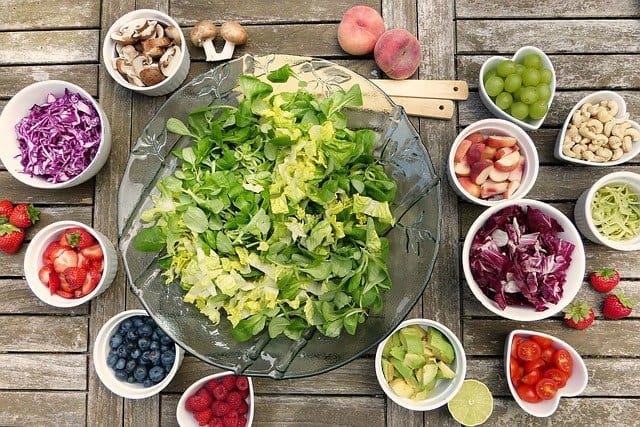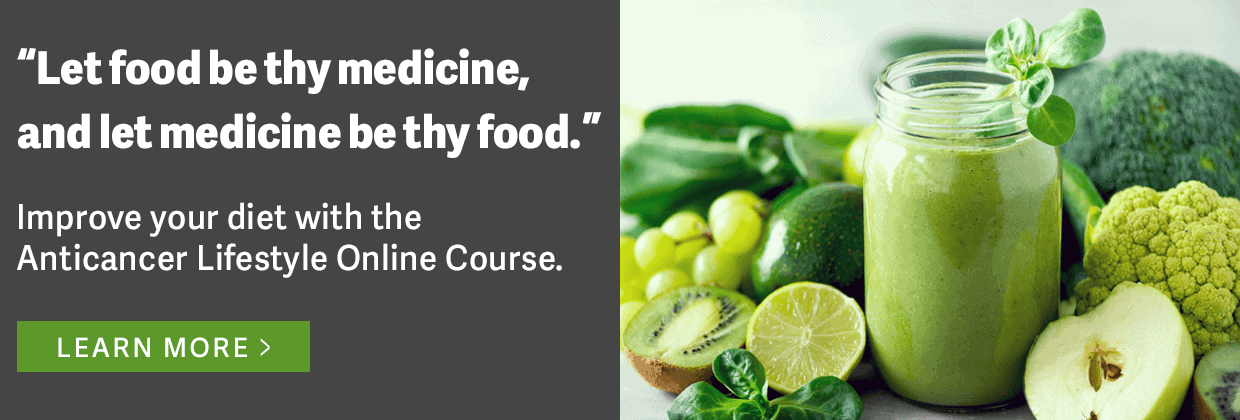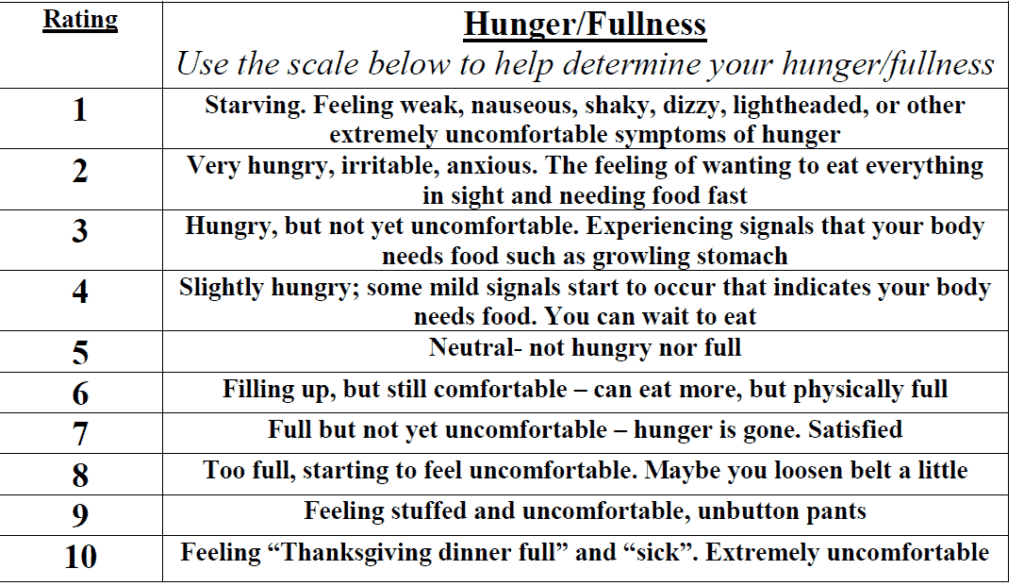A healthy body weight looks different on everyone.
There are MANY reasons why individuals would want to maintain a healthy body weight, eat more fruits and vegetables, and have healthy lifestyle habits. For example, preventing Type 2 diabetes, heart disease, living a long, independent life, feeling well, and improving mental health.
Nutrition and Cancer
According to the American Cancer Society, more than 4 in 10 cancers and cancer deaths have been linked to modifiable lifestyle risk factors. Excess body weight has been associated with increased risk for certain types of cancer. Eating fewer fruits and veggies has been linked to certain types of cancers, and many dietary factors may play a role in increased risk for colorectal cancer.
However, there is no body size or specific BMI range that can adequately capture someone’s overall health. Eating healthy should feel good both physically and psychologically, resulting in a satisfying experience. That’s why it’s important to find the balance between information and pleasure.
What is Healthy Eating?
Did you know 95% of all dieters will regain their lost weight in 1-5 years? Unless you have an extreme adverse food reaction, food allergy, or medical condition such as celiac disease preventing ingestion of certain foods, dieting is not recommended.
Also, Americans spend over $60 billion on dieting and diet products each year, however more than half of all advertising for weight-loss products made use of false, unsubstantiated claims. And, diets don’t consider the ever-changing human body!
So how does one minimize risk for cancer development and recurrence along with other chronic health conditions, while feeling more at ease around all foods and start to lessen feelings of being out-of-control with our eating, food preoccupation, guilt, and stress?
I’ll give you one hint on how we do this–and the good news is it doesn’t involve dieting!
So what does healthy eating look like? It involves having a healthy balance of foods AND having a healthy relationship with food. There is no GUILT around food, and eating may even feel pleasurable and satisfying.
Dieting can make you categorize foods as “good” or “bad” to the point where you may think you’re “good” if you eat a “diet approved” food or “bad” if you eat something like sweets or a restricted food. Food is not a moral issue; you are not bad or good based on what you eat (unless you stole that food, of course!).
Lessen feelings of preoccupation, guilt and stress around food
Before going on a diet, many people will eat all the foods they think won’t be allowed. The diet feels like a threat to your mind and body and you may eat even if you’re not hungry. You eat a “forbidden food” and feel like you failed, which can promote overeating.
So, the question begs, how do we nourish our bodies properly to prevent cancer and cancer recurrence, along with other chronic illness including diabetes and heart disease, while feeling at ease around all foods and lessening feelings of being out-of-control with our eating?
Use these tips for gaining control with eating
For starters, here are a few helpful things to keep in mind:
- It’s not “bad” to eat for reasons other than hunger; we are human!
- Minimize “distracted” eating such as eating in front of TV, while reading on a phone, etc. This makes it EXTREMELY difficult to be able to truly assess how hungry, full, and satisfied we feel when we eat. Our brains are NOT efficient at multitasking, as much as we like to believe they are!
- Try to limit going more than ~5+ waking hours without eating; especially if you’re someone who feels out of touch with their hunger and fullness cues. This is when our energy reserves usually run low.
- When you are getting ready to eat a meal or a snack ask yourself ‘Where am I on the hunger/fullness scale?’ (See Hunger/Fullness Scale below). Ideally, you’ll be around a 3 or 4. Halfway through your meal pause for a couple of seconds and check in with yourself: ‘Where am I on the scale now?’ Eat until you get to a 6-7, then practice stopping.
- If you don’t listen to your body—feeding it when it’s hungry, stopping when it’s not—you can distort your hormonal hunger and fullness cues (see Hunger/Fullness Scale).
How to Regain Pleasure in Eating: Step-by-Step Guide
Ask yourself the following questions:
- What do you REALLY want to eat? Ask yourself this, and then enjoy it! Give yourself permission to eat this food.
- Pleasure of the palate: Try not to worry about what you are eating or how you’ll work off what you already ate. Experience what you’re eating in the moment. Tune into the sensual qualities of food: taste, texture, aroma, appearance, temperature, and how the food makes you feel.
- Create an enjoyable eating experience: Provide variety, be available to appreciate your food, sit down for a meal, eat slowly, check in with your fullness, and savor each bite. Eat when you’re gently hungry vs. overly hungry. Eat in a pleasant environment, when possible. Do your best to avoid tension.
- Don’t settle. If you are enjoying the food keep eating it, and if you’re not know that you can stop eating at any time.
- Check-in: Does it still taste good? Continued exposure to a food decreases desire for that food! The first few bites may taste better than the last ones.
In the U.S. food is often seen as the enemy. The pleasure and satisfaction that can be found in the eating experience is one of the gifts of existence. Food quantity decreases when you are present and savoring what you’re eating; allowing yourself pleasure and satisfaction during the eating experience.



 Crystal Pace
Crystal Pace 



